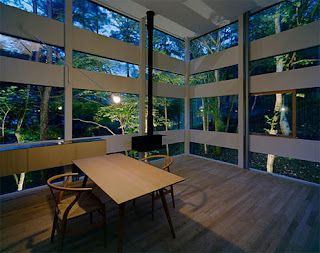Nowaday we tend to bring home a curious example of floating. Designed by Robert Harvey Oshatz sits on the Willamette River in Portland Oregon. Designed for some was commissioned to create a floating home however that might preserve the privacy of its inhabitants, somewhat sophisticated only if it's sandwiched between two different boats each with a floating mooring.
The promoters had dreamed of living within the water, sloping ceiling and wanted a house to be used on weekends and holidays, so that the scale of the mooring of twenty square meters, there was an enormous impediment. one of the problems he encountered the architect was the prohibition of building the house floating on the water and held within the margin of the river and was later towed to the dock.
The architect began by creating a floating platform product of fir wood, terribly durable platform placed on the L-shaped beams and a floor of plywood. beneath the trees were rigid foam cubes for the floor structure and plywood were discontinue from water. Undoubtedly one of the highlights is its structure style sloping ceiling, reminding the organic style of the past. Remembering how pervasive the ripples structure stands of spruce and cedar. The house has sliding glass doors from floor to ceiling, the sole direct contact with the surface, therefore preserving the privacy of its inhabitants.
The promoters had dreamed of living in the water, sloping ceiling and wanted a house to be used on weekends and holidays, so that the dimensions of the mooring of 20 square meters, there was a big impediment. One of the problems he encountered the architect was the prohibition of building the house floating on the water and held in the margin of the river and was later towed to the dock.
The architect began by creating a floating platform made of fir wood, very sturdy platform placed on the L-shaped beams and a floor of plywood. Under the trees were rigid foam cubes for the floor structure and plywood were cut off from water.
Undoubtedly one of the highlights is its structure design sloping ceiling, reminding the organic design of the past. Remembering how pervasive the ripples structure stands of spruce and cedar. The house has sliding glass doors from floor to ceiling, the only direct contact with the outside, thus preserving the privacy of its inhabitants.



















